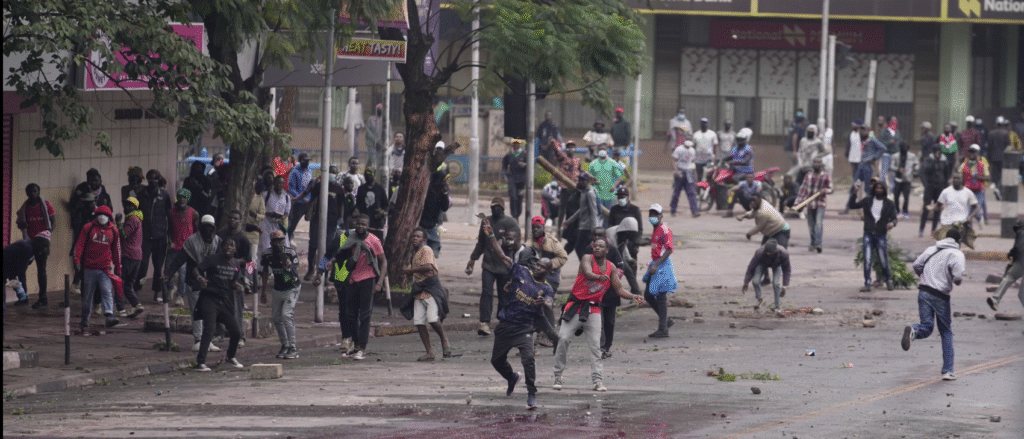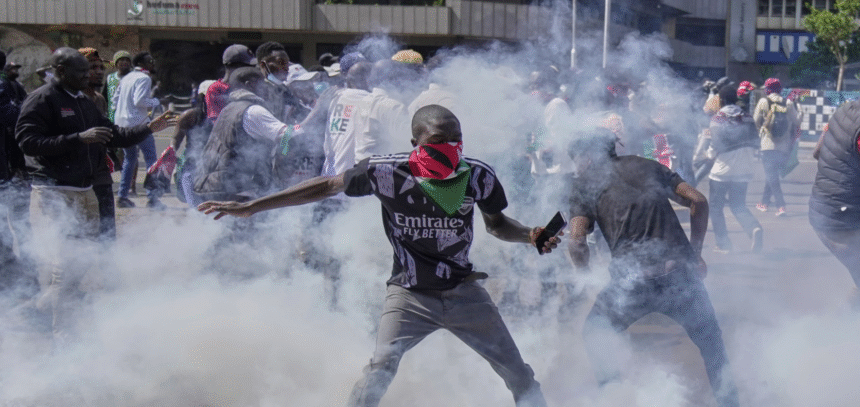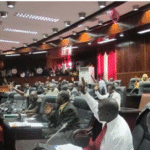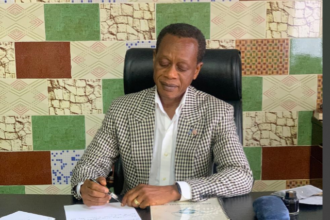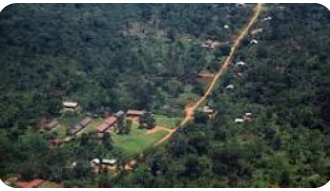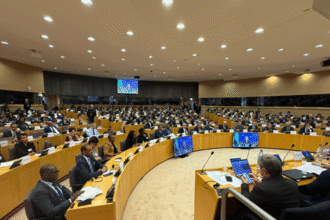By Patrice Katuma
Nairobi, Kenya – The streets of Kenya have once again become a battleground most parts of last week, as nationwide protests, largely fueled by a disaffected Generation Z, have met a fierce government response. On June 25th, demonstrations marking the one-year anniversary of deadly parliamentary unrest saw a tragic escalation, with Amnesty International reporting 19 demonstrators killed and at least 500 injured, primarily by gunfire.
The Communications Authority of Kenya (CA) issued an emergency order banning live media coverage of the protests, a move immediately condemned by observers and media watchdogs as a dangerous precedent that stifles freedom of expression and hinders vital information dissemination. While the order was swiftly revoked by judges, the attempt has intensified concerns about the government’s approach to dissent.
The current wave of protests is reportedly driven by widespread outrage over the treatment of individuals like anti-corruption activist Albert Ojwang, who died in police custody this month after accusing a senior officer of corruption on social media, and software developer Rose Njeri, who was arrested for allegedly a tool to object to government tax laws online. These incidents, alongside the alleged targeting of journalists like Catherine Wanjeri, who was hit with rubber bullets despite being clearly identifiable as press, have ignited fury among a young, well-educated populace acutely aware of their civil liberties enshrined in Kenya’s modern constitution.
“I came out here because first, I’m a Kenyan, and being here on the streets is exercising my right. And standing against this regime that is tyrannical,” one demonstrator told DW on Wednesday.
However, the government, under the Ministry of Interior’s Cabinet Secretary Kipchumba Murkomen, has shown no indication of yielding. Murkomen has dismissed the ongoing demonstrations as an “attempted coup” orchestrated by “criminal anarchists.”
Experts suggest the root of the unrest lies deeper than specific incidents. “Gen Z is ultimately demanding development and growth opportunities,” explained Irungu Houghton, director of Amnesty International’s Kenya division. “If the government does not see and address that head on, then the protests will continue beyond this point. But the question of course is: If the elections are in 2027, that is still a long way away for a population that has no patience.”
Muthoki Mumo, who monitors the situation in sub-Saharan Africa for the Committee for the Protection of Journalists (CPJ), believes the CA’s attempt to control media coverage is a continuation of a pattern. “We can say from historical context, this government has not taken dissent well, has not responded well to the criticism in the form of thousands of young people who’ve taken to the streets at various points over the last year. And I see this order fitting into that.” Mumo highlighted that similar orders were issued under the previous administration and that the High Court had only recently clarified the CA’s lack of authority to prevent live reporting.
The government’s response has not only targeted public demonstrations but also extended to individuals on social media. Houghton noted, “The other concern has been how this has begun to shift to individuals who are on social media platforms. And so, you will have somebody with 30,000 or 40,000 followers targeted purely because they made a comment about a powerful person or a project, or they called for a demonstration.”
Mumo added that the government often targets dissent “at the margins,” starting with bloggers and social media users before larger media outlets. The use of laws like the one against cybercrime and computer misuse is being viewed by civil society as a political tool to silence critical voices.
The escalating tension, characterized by violent crackdowns on protesters and attempts to control information flow, is raising serious questions about the state of democracy and freedom of expression in Kenya. As young Kenyans continue to demand accountability and better opportunities, the government’s hardline stance risks further alienating a significant portion of its population and potentially fueling a prolonged period of instability.
